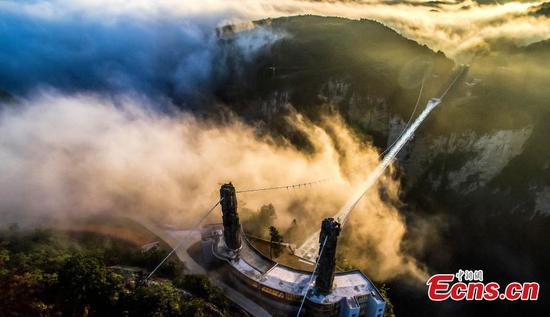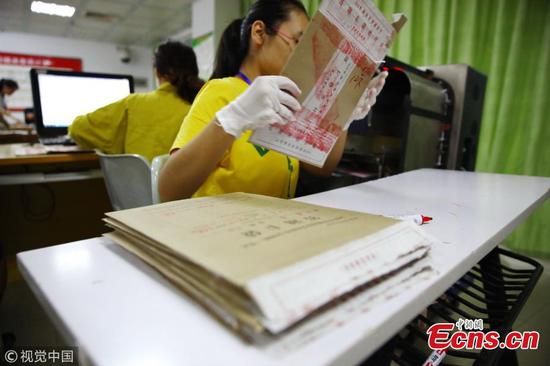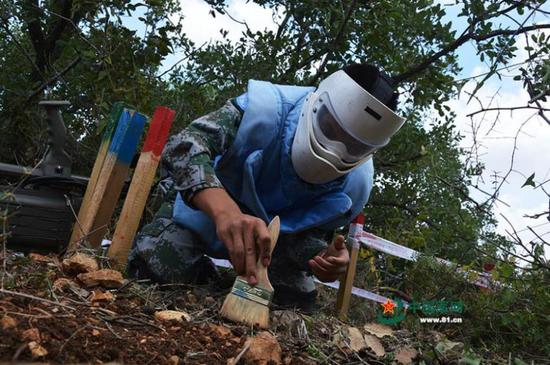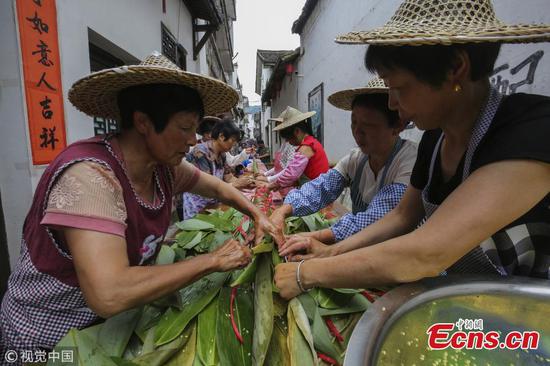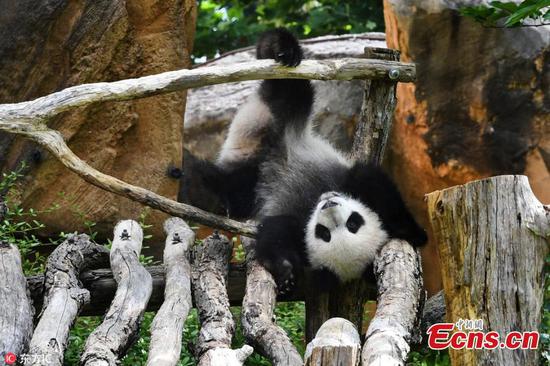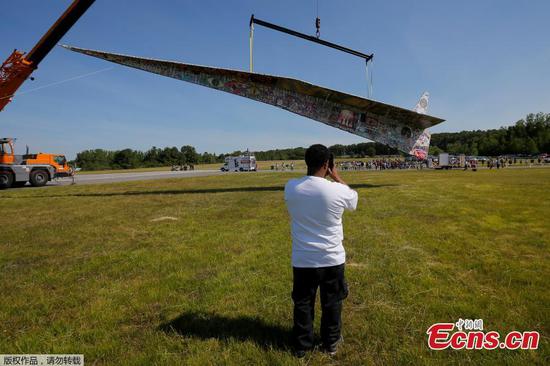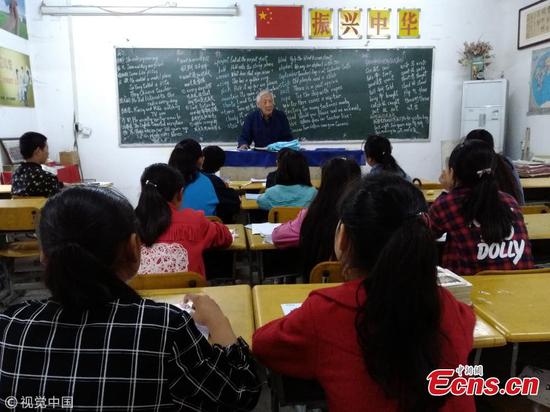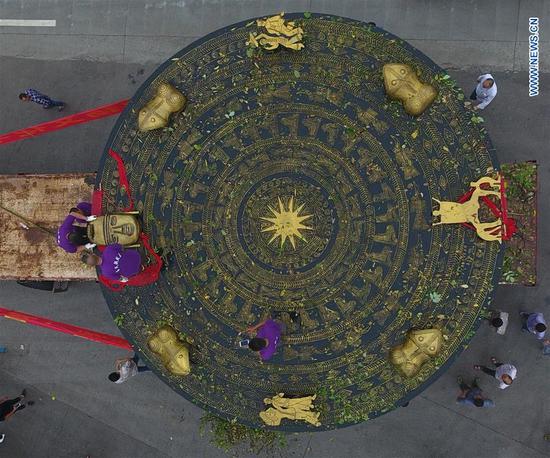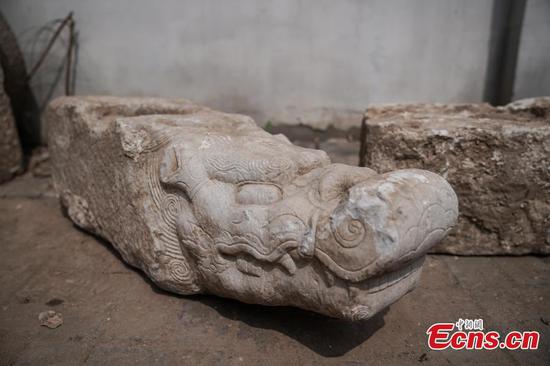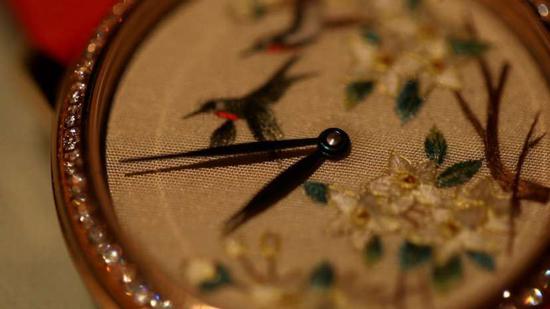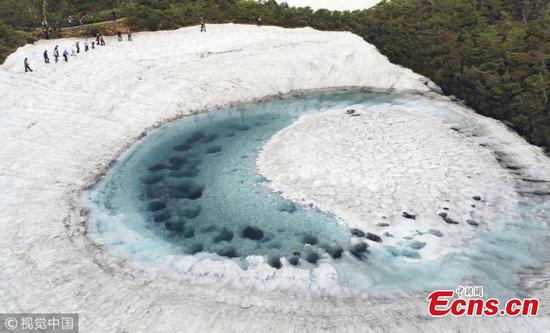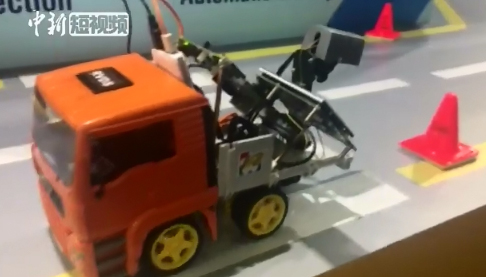
People look for chondrites (inset) in a sugarcane field in Manlun village in Yunnan Province on Monday. (Photo by Dai Zhenhua/For China Daily)
A recent test reveals that the chondrites - stony nonmetallic meteorites – that hit Xishuangbanna, Southwest China's Yunnan province, about two weeks ago, are 4.5 billion years old - almost the same age as of the solar system.
The test was conducted by Xu Weibiao, chief scientist of the Purple Mountain Observatory under Chinese Academy of Sciences, after he received through special delivery one of the over 200 meteorites found in Xishuangbanna on June 11.
Under electron microscope, spherical masses can be seen randomly scattered on the surface of the meteorite test sample.
These are chondrule, which cannot be found in rocks on the earth but are unique to the meteorite. The formation of it can be traced back to 4.5 billion years ago when the sun was just a large nebula - a mass of gas and dust, Xu said.
He said that sometimes dust particles can be melted at the instantaneous high temperature generated by lightning and thunder in the nebula and then solidify into balls. Combined with other dust particles, the balls become stars. When the stars collide, some rocks are dropped into space. Part of the space rocks falls on the earth and become chondrites finally.
The study also found that the meteorite comes from the asteroid belt between the orbits of Mars and Jupiter
The tested chondrite is of high scientific research value as it yet to be affected by earth's environment and comprehensively provides information about asteroid in the solar system, Xu added.
A nomenclature application for the meteorite has been submitted to the Meteoritical Society by Xu with the name of "Mangui", a village in Xishuangbanna where the main part of the space rock fell on.














